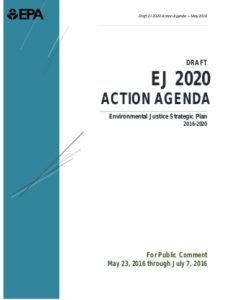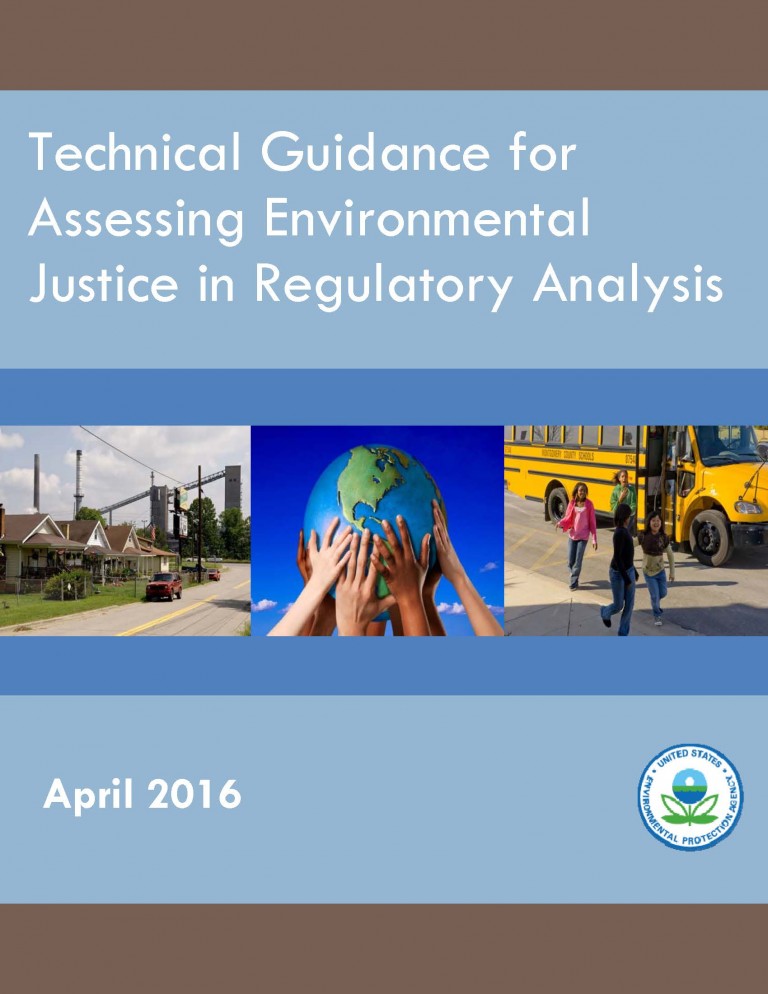Image: East Bay Express https://goo.gl/9yJb6H
Freight transportation hubs such as ports and rail yards may be America’s biggest “black hole” in terms of environmental health, but that might change in the future.
Owners of most polluting facilities, such as power plants, petrochemical facilities, and factories have at least some limits placed on their ability to pollute the air their neighbors breathe, and in many cases, the EPA has taken action to improve regulations and oversight.
But most efforts to address goods movement public health have been less direct and less effective, at least in the short term. While the EPA has worked to require cleaner engines in locomotives and trucks, subsidize engine upgrades in sensitive locations, promote and assist in voluntary efforts, and in other ways, these efforts have not kept pace with the challenges facing overburdened port and rail yard communities.
Fortunately for the over thirteen million Americans who live in these neighborhoods and the tens of millions who live along highway freight corridors, the U.S. Environmental Protection Agency has been listening to overburdened communities, and is developing plans that may improve the lives of millions of people.
Yesterday, the EPA took steps to inform the public of two important draft plans that may bring relief to these communities and others, and to get public feedback.
First, EPA held a webinar on the final draft of the agency’s Environmental Justice (EJ) strategic plan. Second, the agency released new draft guidance for incorporating environmental justice into regulatory analyses. A summary of each follows:
The EPA Environmental Justice Strategic Plan
 The EPA held a webinar yesterday to discuss the final draft of EJ 2020, the agency’s strategy for environmental justice for 2016-2020. During the webinar, Charles Lee, an EJ pioneer and senior EPA official, described plans that indicate that freight transportation air pollution (as well as other priority areas) would be central to EPA’s EJ work in coming years. Mr. Lee said the EPA will devote more resources to address pollution in overburdened communities, develop new tools to address cumulative impacts, and strengthen stakeholder involvement.
The EPA held a webinar yesterday to discuss the final draft of EJ 2020, the agency’s strategy for environmental justice for 2016-2020. During the webinar, Charles Lee, an EJ pioneer and senior EPA official, described plans that indicate that freight transportation air pollution (as well as other priority areas) would be central to EPA’s EJ work in coming years. Mr. Lee said the EPA will devote more resources to address pollution in overburdened communities, develop new tools to address cumulative impacts, and strengthen stakeholder involvement.
Throughout his presentation, Mr. Lee put great emphasis on collaboration with other Federal agencies, states, and other regulators, and communities. He noted that other agencies are involved with freight transportation, and that the EPA will work with them.
Most importantly for port and rail yard communities, Mr. Lee discussed two objectives relevant to freight transportation air pollution and health. He said EPA will:
-
Advance EJ in Federal agencies by integrating it into the NEPA process and addressing impacts from goods movement, and
-
Achieve air quality that meets fine particle pollution national ambient air quality standards for low-income populations.

